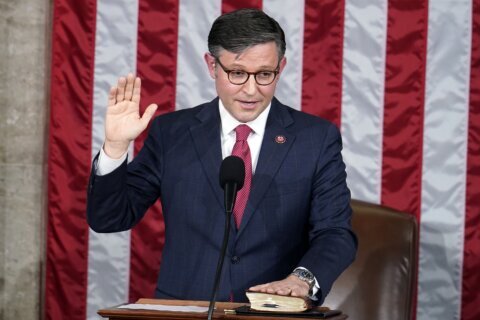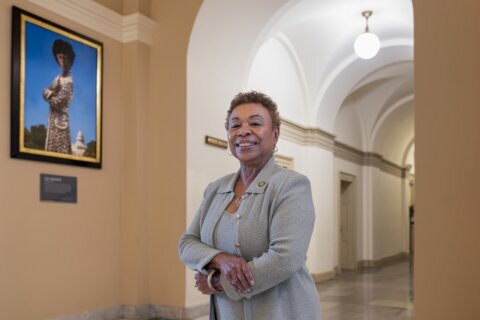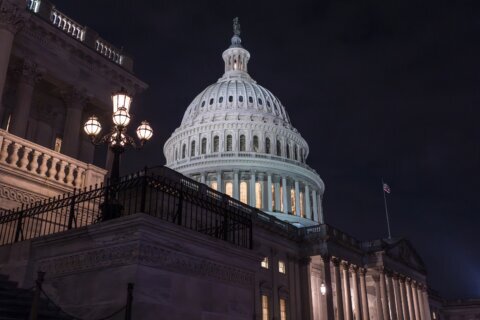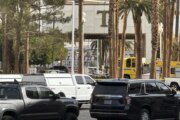WASHINGTON (AP) —
Maricopa County, Arizona, has become the nation’s ultimate swing county — a place that could determine whether Democrat Kamala Harris or Republican Donald Trump will be the next president and which party controls the U.S. Senate.
The county is so closely divided politically that it can take more than a week to learn who won it. This year, election officials warn it could be as long as 13 days to tabulate all of the ballots in Maricopa.
The drawn-out count has made Maricopa County — home to Phoenix and dozens of other communities — a center of election conspiracy theories.
But the reason it takes so long is simple. Here are some things to know about this consequential battleground:
It is a sprawling, fast-growing county
Maricopa County stretches across more than 9,000 square miles, more than four U.S. states. With its 4.5 million residents, the county is home to 60% of Arizona’s voters. It has more residents than nearly half of the states in the country.
It wasn’t always that way. In 1969, the county was still home to fewer than 1 million people. It became a magnet for conservatives like John Kavanagh, a retired New York Port Authority Police officer who in 1993 relocated with his family to Maricopa County.
Kavanagh was like a lot of other people who moved to Arizona in the 1990s — middle-class folks fleeing colder places and what they saw as economic and political dysfunction around them — for a sunny, affordable, and what they perceived as a cleaner city.
In 1993, the county’s population was 2.3 million, and Republicans dominated the state legislature and Maricopa County politics.
Today, the county is nearly double that size, and its politics have changed. Arizona now has a Democratic governor, elected in 2022. Both its U.S. senators were elected as Democrats.
How Maricopa went from GOP stronghold to swing county
Among the reasons Maricopa County’s political leaning shifted was increased migration to Arizona from Mexico.
In the 1990s, President Bill Clinton’s administration strengthened California’s border, pushing illegal migration to Arizona, which already had a robust Hispanic population. Immigration quickly became a political flashpoint, leading many in the state’s already-large Latino population to feel that Republicans were demonizing them.
The biggest shift came in 2010, when Arizona’s Republican-controlled legislature passed a law, SB1070, that allowed local police to stop people they suspected of being in the country illegally. The law, which opponents dubbed “Show Me Your Papers,” was the harshest anti-immigrant law in the nation, and it energized the state’s Latinos to organize against Republicans.
It “galvanized the Latino community like nothing ever had ever done before,” said Joe Garcia, a leader of the Latino activist group Chicanos Por La Causa.
Still, the first rumblings that Maricopa County could swing against the long-dominant Republican Party didn’t come until 2016.
Republican voters like Gordon Keig were growing increasingly uneasy with some GOP positions.
Keig couldn’t bring himself to vote for Trump or his 2016 rival, Hillary Clinton. And once Trump came into office and began what Keig saw as his erratic, feud-driven approach to governing — including fighting with Arizona’s popular senior Republican Sen. John McCain, whose grandchildren Keig’s own daughters knew — Keig couldn’t take it anymore. He switched his registration to the Democratic Party, saying he felt like Republican values “weren’t there for me anymore.”
In 2020, Keig voted for Democrat Joe Biden. The change by voters like him is visible by comparing Maricopa’s votes in the 2012 presidential election with 2020. A crescent of more affluent neighborhoods ringing central Phoenix from the north to the southeastern edge, where a new Intel chip plant has attracted high-tech workers, switched from Republican to Democratic. Local operatives dubbed the area “the flip zone.”
The flip zone largely tracks where Maricopa’s more educated residents have clustered. Once less educated than the national average, the county now boasts a slightly higher share of adults with four-year-college degrees than the national average — a key indicator of voting Democratic in the age of Trump.
The county became a hotbed for Trump’s election lies and conspiracies
Trump falsely claimed he won Arizona after his 2020 loss to Biden, and he and his allies attacked anyone who argued otherwise.
Supporters turned up outside the county elections office, some armed and many waving Trump and American flags, for a “Stop the Steal” rally. Trump’s then-attorney, Rudy Giuliani, held hearings at a Phoenix hotel.
The Republican-controlled state Senate launched an error-riddled review of Maricopa’s handling of the 2020 election. The county became something of a tourist attraction for election deniers who came from other states to watch the show.
County Recorder Stephen Richer, a Republican who defended the accuracy of the county’s election results, was singled out for criticism by Trump himself, and Richer and his family faced threats.
Richer says the reason some Republicans remain skeptical of the way elections work in the county isn’t because there’s anything especially complicated or unusual in how it counts votes. It’s because Maricopa — where Biden defeated Trump by a margin of about 11,000 votes — may be the best place to undermine confidence in national elections.
Maricopa is a swing county in a swing state, he noted.
“So if you wanted to really fix your attention on a place that would yield dividends for your theories, then Maricopa County would be the place,” Richer said.
Why a complete count takes time
The conspiracists have seized on how Maricopa reports its ballot counts in one large burst after Election Day and then in dribs and drabs for more than another week, when it finally becomes clear who won. There are three main reasons for this — Maricopa’s size, the closeness of races in the county and Arizona’s voting laws, which were written and approved by Republicans.
Maricopa is the second-largest election jurisdiction in the nation. Only reliably Democratic Los Angeles County is larger.
Maricopa reports its results far faster than Los Angeles, but it takes longer to find out who won because the county — and Arizona overall — is so evenly divided. That creates a false impression of disorder in the vote count.
Arizona’s mail voting law also drags out the count. It allows voters to return mail ballots by the close of polls on Election Day. In 2022, 293,000 voters — one-fifth the total vote in Maricopa — dropped off their mail ballots on Election Day.
Mail ballots take longer to count because, before they can be tallied, the envelopes must be scanned, the ballots sorted and the voters’ signatures inspected to ensure they’re legitimate. Some states like Florida require all mail ballots to be in before Election Day so this process is over when the polls close. Because of Arizona law, when Maricopa’s polls close it’s just beginning.
Extending the count even longer is a provision in Arizona law that allows voters to “cure” their ballots up to five days after Election Day. That means if the election office thinks the signature on the ballot or some other technical detail is wrong, the voter has five more days to come in and fix it so the ballot counts.
Copyright © 2025 The Associated Press. All rights reserved. This material may not be published, broadcast, written or redistributed.







